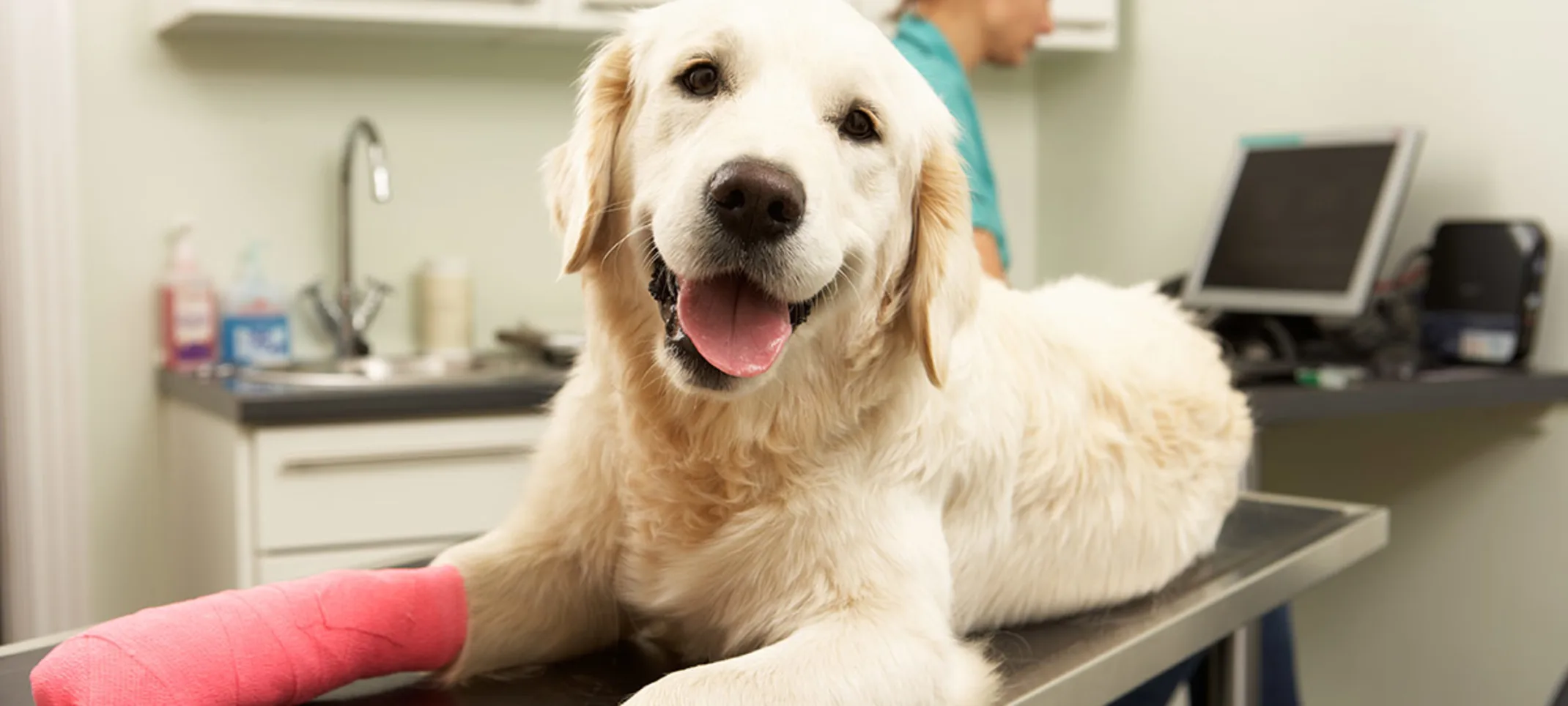Animal Medical Center of Gahanna
Orthopedic Surgery
Orthopedic surgery can help pets who suffer from joint problems, torn ligaments, broken bones, and even help correct congenital problems.

Overview
Orthopedic surgery treats bones, joints, ligaments, and muscles—areas in which your pet may feel pain in from a variety of conditions. If veterinary orthopedic surgery is recommended for your pet, we will do everything possible to keep them safe and comfortable before, during, and after the surgery.
Why would my pet need orthopedic surgery?
Orthopedic surgery can help animals who suffer from joint problems, torn ligaments, broken bones, and can even help correct congenital problems. Most orthopedic surgery is focused around the cranial cruciate ligament (CCL), sometimes referred to as the Anterior Cruciate Ligament (ACL).
How are typical orthopedic injuries treated?
Tibial Plateau Leveling Osteotomy (TPLO)
Tibial plateau leveling osteotomy is used to repair a torn ligament by changing the dynamic of the animal’s knee. The ligament becomes irrelevant to the stability of the knee by counteracting the force that caused the ligament to tear. The reconstructive surgery cuts the tibia bone, rotates it, and becomes held in place with metal plates. This is an extremely effective long-term solution for the injury.
FHO
A Femoral Head Ostectomy (FHO) restores mobility to the hip joint by removing any pain caused by Avascular Necrosis. This essentially will remove the ball portion of the ball-and-socket joint. The leg muscles will then hold the femur in place. Over time, scar tissue will form in the socket and the leg bone (femur) to provide padding creating what is called a 'false joint'. While different from a traditional hip joint, this process provides pain-free mobility in most patients.
Luxating Patella Surgery
Patellar luxation is a dislocated knee cap and most commonly seen in small breed dogs. Most patellar luxation occurs when the patellar displaces from its normal position to the inside of the knee. Pets with this condition may have an intermittent non-weight bearing lameness and you may even hear a popping noise in their knee. There are many ways to treat this from a simple knee brace for a Grade 1 luxation, to realignment surgery for lower grade luxations. Bring your pet in so we can determine the best way to treat the luxation.
Lateral Suture
A lateral suture procedure replaces the Cranial Cruciate Ligament (CCL) with a prosthetic ligament made of strong Nylon suture material along with the tightening of the tough tissue outside the joint (fascia) to provide additional stability. Over time the Nylon suture stretches and will eventually break as the fibrous tissue around the joint strengthens and takes the place of the Nylon suture creating joint stabilization. This technique has been successfully used for over 40 years for both dogs and cats of varying sizes and breeds.
Fracture Repairs
A fracture is a break in the bone or cartilage and can be repaired from simple external splinting to more advanced internal plating. Fractures are typically caused by trauma, a disease or tumor in the bone, or stress applied to a certain bone.
Our veterinarians adhere to the highest level of care standards for all surgical procedures. Our highly skilled doctors place the utmost emphasis on pain management to ensure your pet is safe and comfortable throughout the treatment process. Using advanced technology, your pet's vital signs are monitored by our veterinary technicians, who will remain with your pet through recovery.
